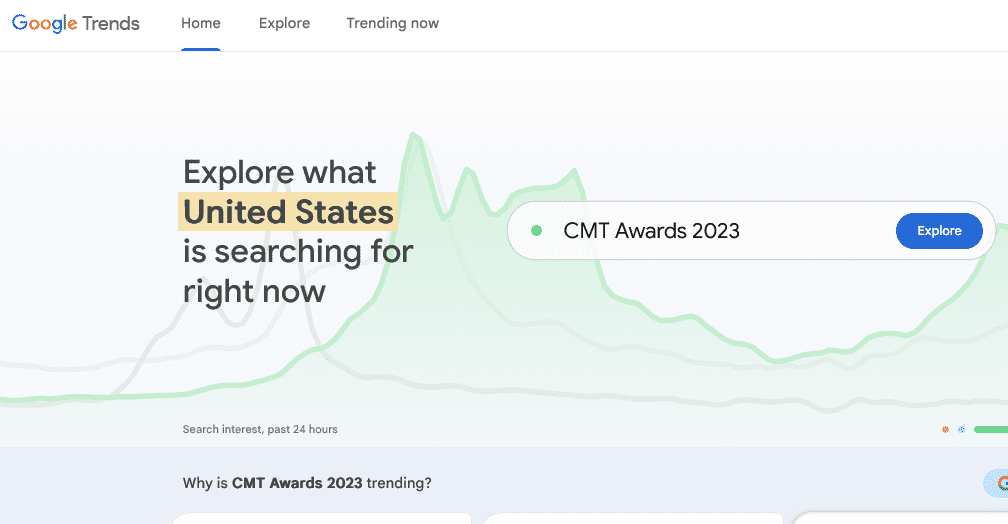Have you ever wondered how brands like Apple, Starbucks, and Netflix manage to achieve worldwide recognition and success? The secret lies in their global strategy.
To ensure consistent growth for your business, it is important not to just create a captivating marketing strategy and promotional materials, but also to continuously analyze and measure data. By relying on hard indicators such as brand awareness metrics, you can review your actions and adjust them to positively impact your bottom line. In this article, you will discover which brand recognition metrics you should prioritize.
Brand awareness – what is it?
Before diving into the specific metrics that gauge brand awareness, it is crucial to have a clear understanding of what it entails. Essentially, brand awareness measures the degree of brand recognition (its products included) among customers based on distinguishing features such as the name, logos, mission, or values. In other words, brand awareness reflects the number of people who associate a brand with its specific characteristics.
8 brand awareness metrics
Evaluating brand awareness within your target audience is a critical component of any marketing campaign. Despite your belief that your promotional materials are unique and attention-grabbing, they may not be reaching the right target customer or not enough to motivate people to make a purchase. By examining hard data, you can determine whether your efforts are yielding the desired results.
The following list outlines the top 8 metrics you should prioritize in order to achieve optimal performance.
Check brand mentions
A crucial brand awareness metric is brand mentions, which indicate whether customers are actually using the products or services they have purchased from your business. People often tag companies on social media platforms to express their fondness for a particular brand or to recommend its offer to others. However, it is not just the frequency of mentions that matters, but also the context in which they are made. In the case of customer feedback, the adage “no publicity is bad publicity” does not always hold true. While negative reviews can garner a lot of attention, an overwhelming number of unfavorable opinions about a product or service can tarnish the brand’s reputation.
There are various analytics tools available in different subscriptions that allow you to track the number of mentions. Choose one with features that will provide you with the most useful insights. Such tools are a valuable asset for any business. Additionally, there are several other metrics that are important to track as well that we will discuss in the next points of this list.
Analyze branded search volume
Branded search volume is the number of times a particular keyword is searched for, typically on a monthly basis. It indicates how frequently users look for a specific phrase in search engines. The search volume data is commonly used to assess marketing strategies that focus on search engine optimization. Branded search volume is crucial for measuring brand awareness. It is important to check branded search metrics to see how often users look for your brand name, or perhaps the name of your flagship service or product.
It is also worthwhile to consider long-tail phrases that are related to your brand, such as “brand X – what does it do?” or “reviews of brand X’s product.” By doing so, you can determine whether potential customers are showing interest in your offer. Tools like Ahrefs Keywords Explorer can help you estimate search volume data. Additionally, you should monitor branded organic traffic using Google Search Console.

Use Google Trends data to measure brand awareness
Google Trends is another example of the right brand awareness metrics. While it is primarily used as one of the SEO tools, it can also be used to determine how well-known your brand in the particular regions in the specific time period is.
However, by searching for your company name or long-tail phrases, you can see what volume of branded search is, how much interest the audience has in your company, and how this data changes over time. This information can be incredibly useful to track brand awareness metrics. The best part is that you can access Google Trends data for free, making it an excellent tool to use from the very beginning of your brand’s development.

Use backlinks – the easiest way of measuring brand awareness
Backlinks are a crucial element in search engine optimization. SEO professionals strive to obtain high-quality backlinks to a company’s website to improve its search engine ranking, as Google’s algorithms prioritize websites with links from high-authority pages. What is more, backlinks also increase external referral traffic.
However, you should also remember that they are important when you want to properly measure brand awareness. Contrary to popular belief, non-collaborative backlinks are not the only ones that have value. For example, if you cooperate with a beauty portal and employ it to write an article about your cosmetic products with external links, you are still raising brand awareness. By doing so, you reach people who may not be familiar with your company but read the magazine. The industry portal and external blog traffic is essential for building brand awareness, regardless of whether they are the result of collaboration or not.
Discover our comprehensive branding services and witness the revolutionary impact of backlinks on your brand awareness strategy. We meticulously analyze backlink quality and quantity, ensuring alignment with your brand’s values and objectives.
Track brand awareness through social listening
One of the best key metrics of measuring brand awareness is social listening, that is the process of constantly monitoring what is being said about your brand online. It also extends to your direct competitors, allowing you to stay up-to-date with their activities. This process includes:
- reading comments on social media;
- reading articles about your services or products;
- checking online media coverage;
- collecting reviews;
- watching all videos and posts on social media platforms where your brand was mentioned, such as Instagram stories or TikTok.
Analyzing data related to social listening
Using social listening tools can make your job easier by keeping you updated on all the online content related to your brand. The specialized brand tracking software can identify even the smallest reference to your company name. Without such a social listening tool, the task would be arduous – manually checking social media mentions, scouring blogs and industry portals, as well as regularly refreshing Google business cards would only scratch the surface.
Despite your best efforts, it would be impossible to keep up with everything. Trusting such a social listening tool will be a considerable advantage to you, as it has a far-reaching and powerful capability that streamlines this process.
Measuring brand awareness through social listening – what are the benefits?
Social listening enables you to gain a deeper understanding of your customers’ needs, allowing you to plan brand awareness efforts on a larger scale. It also facilitates the development of your company, ensuring it aligns with the preferences of your target audience.
Moreover, social listening provides an opportunity to monitor competitor activity, including their social media engagement. This information can help you identify potential brand ambassadors and communicate with customers, ultimately strengthening relationships. As a result, you will be able to raise brand awareness successfully.
Visit our blog for more insights on brand management strategies.
Responding to social listening
You need to remember that being responsive is a vital component when you want to build awareness through social listening. Whether reviews are positive or negative, they should never be left unaddressed. Consumers need to see that their social engagement is valued. A brand that acknowledges criticism and promises to analyze any issues highlighted is viewed more favorably than one that reacts aggressively or ignores such comments.
Social listening enables you to respond promptly and mitigate any potential damage before it turns into a significant PR issue. For instance, if a customer receives an expired product and posts about it on your brand profile, it is a significant problem. To handle this, you can quickly reach out to the customer, apologize for the situation, offer a replacement product along with freebies, and kindly ask them to remove the negative comment. Deleting unfavorable comments from social media followers by companies can be perceived as dishonest and lead to users posting negative feedback elsewhere, so you should not do it.

Monitor direct traffic
Direct traffic is a critical KPI for measuring brand awareness. It is a type of web traffic that is tracked in Google Analytics reports. Direct traffic shows how many users visited a website by typing the URL directly into the browser window or using a bookmarked address. Direct access is also counted when someone clicks on a link in an email, a Word, Excel, or PDF document, among other sources. The best part is that you can access this information without any fees, as Google Analytics is a free tool. Therefore, it is vital to use when running a brand awareness campaign.
Where does direct traffic come from and why is it important when you want to build brand awareness?
You should pay attention to direct traffic when you want to measure brand awareness. This type of website traffic has such a significant role because it consists of visitors who have:
- remembered the website’s address;
- bookmarked the website;
- guessed the website address based on the company name;
- learned about the website from offline sources like billboards;
- visited the website based on recommendations from friends or influencers.
These groups are a crucial target audience since they already know your brand and have either made a purchase or are highly interested in doing so. Therefore, information about direct website traffic is invaluable and should be utilized as much as possible to enhance your brand awareness campaign.

Read all reviews
Another type of important brand awareness metrics is the customer review, including both longer reviews like blog articles and shorter ones like Google business card comments. People tend to be bolder online, so they usually express their honest opinions. If you receive a negative review that does not contain untrue information nor is a sign of hate, you should respond to it with gratitude and learn from the feedback. The same goes for positive reviews, which should also be acknowledged to show the brand’s appreciation for the support and social engagement.
Conduct a brand awareness survey
Measuring brand awareness is best done using research methods, and one of the right tools for this purpose is a brand awareness survey. However, it is important to note that this part of the brand awareness campaign requires a significant investment of time and effort, yet the information gathered can be invaluable.
Before delving into the process of measuring brand awareness through a survey, it is essential to understand how this factor is broken down. There are three types of customer brand awareness, each with a different brand perception. The brand awareness measurement involves considering three elements, which are:
- Spontaneous awareness – is the percentage of respondents who can recall the name of a brand from a specific product group without assistance from an interviewer. This is usually tested by asking participants to list all known brands within a certain category, such as toothpaste, cars, or laptops. If a customer mentions your brand among them, it suggests they have a strong familiarity with your product and consider it a top contender in the category.
- Aided awareness – determines the percentage of respondents who recognize a brand when the interviewer specifically mentions its name.
- TOM awareness (Top of Mind Awareness) – measures the percentage of respondents who mention a particular brand as the first to come to mind within a specific category. This is the most desirable metric in brand awareness surveys, and many marketers strive to achieve the highest percentage possible, as it indicates that the brand is the strongest within its category.
Brand awareness survey methods
A brand awareness survey can be carried out through various means, such as via phone (CATI), online (CAWI), paper-based (PAPI), or by using assisted customer surveys (CAPI), which involve conducting interviews, for instance, in front of a supermarket. Such studies can be executed by the company’s owner, a contracted agency, a freelance researcher, or a content marketing team.
Is it worth conducting brand awareness surveys?
Undoubtedly, carrying out brand awareness surveys is a worthwhile endeavor. The brand awareness measurement helps you determine the level of brand loyalty, customer satisfaction with purchases, and the overall perception of your brand among respondents. As a result, you can more effectively manage your business’s promotion and cultivate a positive brand image. Furthermore, obtaining such specific information while measuring brand awareness enables you to establish and maintain strong customer relationships, which are crucial for any business in the long run.
An in-depth understanding of brand awareness surveys necessitates considering factors like brand consistency. In this context, we present a range of real-world examples of brand consistency.

Brand awareness campaigns
When you want to build brand awareness among consumers, you need to remember that this process does not happen overnight. Instead, it requires a considerable amount of time and effort to achieve satisfactory results. Whether you are just starting out or have been on the market for a while but are still not well-known among customers, implementing a range of actions can help change that. Conducting various brand awareness campaigns, both online and offline, can be effective in this regard.
In the process of executing successful brand awareness campaigns, a key tool that can be utilized is a branding questionnaire.
Additionally, it is crucial to maintain a visible presence on social media platforms, not just through advertising, but also by collaborating with influencers or other brands. It is worth considering creating profiles on diverse applications, such as TikTok or Instagram, to reach a broader audience. To reinforce brand recall, a marketing campaign such as social media campaigns with influencers or sponsored ads are valuable tools.
All of these marketing efforts need to be organized into well-structured and thoughtful brand awareness strategies, executed patiently, step by step, and on schedule. This approach will undoubtedly increase brand awareness over time.
Summary
As you can see, you need competence, commitment, and time to build brand awareness. We hope that the brand awareness metrics discussed are now clear to you, and that you will use them to analyze your company’s performance. It is important to note, however, that the presented elements are only a part of what can be analyzed. There are other brand awareness metrics that you should explore once you have reviewed the first eight we have presented.
If you are looking for branding tips for startups or guidance on how to create effective marketing campaigns, we invite you to visit our blog.






